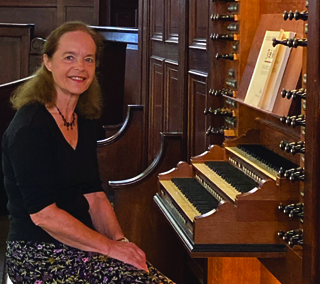 This series continues to draw some big names in the British organ world. Margaret Philips is certainly one of those. A prolific performer and recording artist as well as educator and campaigner, Margaret’s return to Hastings (after 20 years) was greatly anticipated and much appreciated by all present.
This series continues to draw some big names in the British organ world. Margaret Philips is certainly one of those. A prolific performer and recording artist as well as educator and campaigner, Margaret’s return to Hastings (after 20 years) was greatly anticipated and much appreciated by all present.
Throughout the evening we were presented with fine performances of a range of music from 16th Century England to 20th Century Sweden. Opening with the rousing Marche Triumphale by Lemmens and ending with Guilmant’s virtuosic Fantasie sur deux Melodies Anglaises (Home Sweet Home and Rule Britannia!) there was much more in between. Two extended works brought much variety – Mendelssohn’s Sonata No 2 and Partita sopra Nun freut euch by 20th Century organist Lionel Rogg. The well known Prelude & Fugue in A minor by J S Bach ended the first half.
Two contemporary Swedish composers also featured – Otto Olsson (Prelude & Fugue in F sharp minor) and two quirkier pieces by Fredrik Sixten, Tango (Variation on a Swedish folk tune) and Postludio. S S Wesley’s Andante in E minor also featured along with the oldest piece in the programme, a Voluntary by Thomas Weelkes’ which Margaret used to beautifully show off a single 16’ stop.
Throughout the evening we saw a calm confidence and a superb knowledge of both organ and this wide-ranging repertoire. Hugely enjoyed by the audience who coaxed Margaret back for a lovely understated encore.
Next week – Francesca Massey, Freelance organist.
www.oldtownparishhastings.org.uk
Stephen Page
